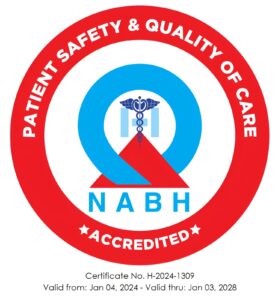
Email : [email protected] | Phone : +91 99622 29940

In 1967, when miscegenation laws and regulations were overturned in america, 3% of most newlyweds had been hitched to some body of a various competition or ethnicity. Ever since then, intermarriage rates have actually steadily climbed. By 1980, the share of intermarried newlyweds had about doubled to 7%. And also by 2015 the true quantity bbw dating site had increased to 17per cent. 4
All told, significantly more than 670,000 newlyweds in 2015 had recently entered into a married relationship with some body of a various battle or ethnicity. In comparison, in 1980, the year that is first which step-by-step information can be found, about 230,000 newlyweds had done this.
The long-lasting yearly development in newlyweds marrying somebody of a unique battle or ethnicity has resulted in dramatic increases when you look at the general amount of people who will be presently intermarried – including both those that recently hitched and people who did so years, and even years, earlier in the day. In 2015, that number stood at 11 million – 10% of all of the married people. The share has tripled since 1980, whenever 3% of married people – about 3 million altogether – had a partner of a race that is different ethnicity.
Overall increases in intermarriage have already been fueled in component by increasing intermarriage prices among black colored newlyweds and among white newlyweds. The share of recently hitched blacks with a partner of a race that is different ethnicity has a lot more than tripled, from 5% in 1980 to 18percent in 2015. Among recently hitched whites, prices do have more than doubled, from 4% as much as 11per cent.
During the time that is same intermarriage has ticked down among recently hitched Asians and stayed just about stable among Hispanic newlyweds. Despite the fact that intermarriage will not be increasing for those two teams, they stay much more likely than black colored or white newlyweds to marry somebody of the various battle or ethnicity. About three-in-ten Asian newlyweds (29%) have partner of a race that is different ethnicity. The exact same will also apply to 27% of Hispanics.
For newly hitched Hispanics and Asians, the chances of intermarriage is closely associated with whether or not they had been created when you look at the U.S. or abroad. One of the 1 / 2 of Hispanic newlyweds who’re immigrants, 15% hitched a non-Hispanic. In contrast, 39% associated with U.S. born did so. The pattern is comparable among Asian newlyweds, three-fourths of whom are immigrants. This share rises to 46% among the U.S. born while 24% of foreign-born Asian newlyweds have a spouse of a different race or ethnicity.

Significant growth into the Hispanic and Asian populations into the U.S. since 1980, in conjunction with the high prices of intermarriage among Hispanic and Asian newlyweds, happens to be a factor that is important the increase in intermarriage. The share of all newlyweds that were Hispanic rose 9 percentage points, from 8% to 17%, and the share that were Asian grew from 2% to 6% since that time. The share of white newlyweds declined by 15 points and the share of black newlyweds held steady at the same time.
The dimensions of each racial and group that is ethnic additionally influence intermarriage prices by affecting the pool of prospective wedding lovers within the “marriage market,” which comprises of all newlyweds and all sorts of unmarried grownups combined. 5 as an example, whites, whom comprise the share that is largest regarding the U.S. populace, may become more prone to marry some body of the identical battle due to the fact many potential lovers are white. And users of smaller racial or groups that are ethnic become more prone to intermarry because reasonably few potential lovers share their competition or ethnicity.
But size alone cannot completely explain intermarriage habits. Hispanics, for example, composed 17% regarding the U.S. wedding market in 2015, yet their newlywed intermarriage prices had been much like those of Asians, who comprised just 5% for the wedding market. And even though the share associated with wedding market composed of Hispanics is continuing to grow markedly since 1980, with regards to was 6%, their intermarriage rate has remained stable. Possibly more striking – the share of blacks when you look at the wedding market has remained pretty much constant (15% in 1980, 16% in 2015), yet their intermarriage price has a lot more than tripled.
Because there is no gender that is overall in intermarriage among newlyweds 6 , starkly different sex habits emerge for a few major racial and cultural teams.
Probably the most dramatic patterns does occur among black colored newlyweds: Ebony guys are two times as likely as black colored ladies to own a partner of the various battle or ethnicity (24% vs. 12%). This sex space is a long-standing one – in 1980, 8% of recently hitched black colored men and 3% of the feminine counterparts had been hitched to somebody of the race that is different ethnicity.